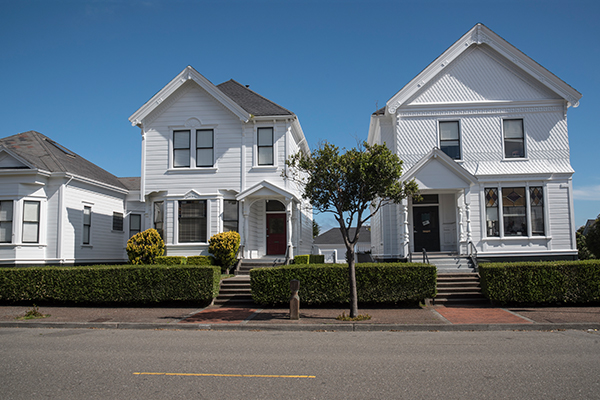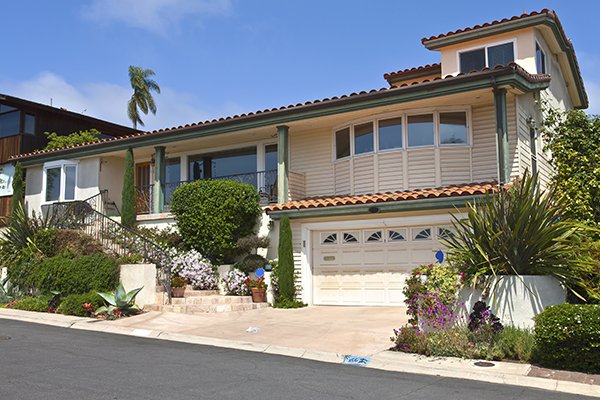Earthquake risk is high in our Golden State. Millions of California homes were built before 1980. Earthquake or seismic retrofitting of older homes is critical to protect your house from earthquakes and lessen the potential for structural damage.
Older houses were built before modern seismic building codes were in place. This means that older houses are often not bolted to their foundations, and their crawl space walls may lack bracing. Without adequate bolting and bracing, a house can slide off its foundation during an earthquake and be severely damaged. Retrofitting your house can reduce its vulnerability, and reduce your personal risk of earthquake injury.
Many expensive earthquake repairs can be prevented with a proper seismic retrofit before an earthquake hits. Most importantly, you're less likely to be injured during an earthquake, or displaced from your home for long periods if your home is retrofitted.
Earthquake Protection Tips for your House
Strengthening your home against earthquakes can help it better withstand the violent shaking that can occur during a quake. Reduce your chances of injury and follow these safety tips on the Seven Essential Earthquake Steps page.
Get a Seismic Retrofit to Help Your House Withstand an Earthquake
The Golden State has a greater than 99% risk of one or more devastating earthquakes striking in the next 30 years.* With the increased risk of earthquakes in California, all of us must begin to prepare for the personal and economic impacts of major earthquakes. Protect your house against earthquakes by strengthening it with a seismic retrofit.
Raised Foundation Houses
Older houses with steps up to the first floor are on a raised foundation, with an area underneath the first floor. These houses can shift off their foundations from shaking, and would benefit from being strengthened with a seismic retrofit. Learn more about how to strengthen different types of raised foundation houses.
Post & Pier Houses
A post and pier house is a raised foundation, but the floor is supported only by upright wood posts. Without a continuous perimeter foundation, the house can shift or collapse in an earthquake. Adding a foundation that is braced and bolted will strengthen the house. Learn more about how to strengthen a post and pier house.
Stem-Wall Houses
“Stem-wall” houses are also a type of raised foundation house, with a wood-framed first floor resting directly on a raised concrete perimeter foundation—in an earthquake, the house could slide off its foundation. A retrofit consists of bolting the house sill plate to the foundation using foundation plates. Learn more about how to strengthen a stem-wall house.
Crawl Space Houses
Crawl space (“Cripple wall”) raised foundation houses have short wood-framed walls between the foundation and the wood-framed first floor, plus a crawl space under the house. Older houses, such as those built before 1980, are more vulnerable to earthquake damage because they were built before modern seismic codes were put in place. For earthquake resistance, there’s a bolt-only (anchor bolt) retrofit, or a retrofit that also includes bracing of the walls (brace and bolt). Learn more from the CEA website about how to strengthen a cripple-wall house.
Houses with a Living Space Over a Garage
Houses built with a living space over a garage are common in many California communities. But these homes may be vulnerable to earthquakes because the walls and door(s) may not be reinforced for withstand shaking. Retrofitting the garage space can make it more resistant to earthquakes. Learn more about how to strengthen a living space over garage house.
Hillside Houses
Houses built on hillsides or steep slopes are vulnerable because the structural elements found in these types of houses may not be designed to withstand shaking. Retrofitting often includes foundation strengthening and wall bracing and bolting. Learn more about how to strengthen hillside houses.
How to Mitigate Potential Earthquake Damage
It is more cost effective to retrofit your house BEFORE an earthquake, than it is to face the costs of repair after an earthquake. The repair for a house shaken off its foundation could be upwards of a couple of hundred thousand dollars.
Ensuring You Have a Place to Live
Millions of older houses in California are exposed to the potential for shake damage from a devastating earthquake. When, not if, a large earthquake strikes, many communities across the shake zone would face wreckage.
While seismic retrofitting does not "earthquake-proof" a house, it can help improve its performance in a quake by making it stronger and more resilient to damage. If your home suffers earthquake damage, you may not be able to live inside it while the repairs are made. And remember it may be a costly process. If you take out a loan to repair or rebuild, you’ll have to pay back that loan, and pay to live elsewhere—all while still paying your mortgage—during the repairs or reconstruction. So why not try and prevent those expenses by strengthening your house now to better avoid earthquake damage.
Protect your house from earthquake damage with an earthquake retrofit.
How Seismic Retrofits Work
Seismic retrofitting strengthens a house by making it more resistant to shaking and earthquake damage. Many homes built before 1980 are more vulnerable to earthquakes because they were built before modern building codes, which take into account earthquakes, were in place. Other types of houses have inherent earthquake vulnerabilities due to their type of construction.
While seismically retrofitting a house does not guarantee against damage, it can help to improve its performance in an earthquake, as it is stronger and more resilient. This can help make your house safer for you and your family.
Find your house type and learn how to strengthen your house.
Earthquake Retrofit Costs
There isn't a standard cost for seismically retrofitting a home. The retrofitting cost range for a standard brace and bolt runs from $3,000 to $7,000. The Association of Bay Area Governments estimated the typical home retrofit that does not require an engineer costs about $4,500.
Larger homes, those built on hillsides, and those with basements or rooms over garages will typically cost more to retrofit.
There are programs that can help you pay for a retrofit. Look into earthquake house protection today and strengthen your house.
Retrofit Your House for Earthquakes
There are many benefits to completing seismic upgrades to your home. Retrofitting helps to keep your house on its foundation. This can include bracing, bolting and/or reinforcing your home’s foundation, walls, roof and chimney to resist earthquake shaking. It also increases the safety for those living inside the home. Find out how to protect your house against earthquakes.
How Long Does It Take to Retrofit a Home
A simple brace and bolt retrofit can take as little as a few days, and workers rarely need to enter the inside of your residence.
Some retrofitting projects can take from 4 to 12 weeks, depending on the scope of work.
Before the work can begin, you will have local government permitting and plan approvals timelines to consider. Now is the time to protect your house against earthquake damage.
What Else Can You Do to Mitigate Seismic Damage?
There are many steps you can take to prevent earthquake damage.
Talking with your family about earthquake safety is the first step to reduce injuries and protect your house against earthquakes. Learn more about personal preparedness and create a family emergency plan:
- Identify safe places in your home.
- Practice Drop, Cover, and Hold On.
- Make or purchase an earthquake safety kit.
- Strengthen your home’s foundation.
Strengthen Your Home!
Retrofitting your home’s foundation can help you ride out the next devastating earthquake. Prepare your house today against earthquakes. Earthquakes move and shift the ground from under your house. Strong shaking can cause weak sections of your house’s foundation to collapse. Strengthen your house today.
*According to the third Uniform California Earthquake Rupture Forecast (UCERF3) report.





